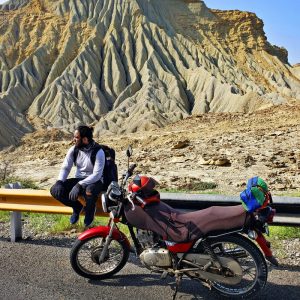All parts of FCE Speaking explained
In my teaching practice, Part 2 of Cambridge First Certificate in English (FCE) is usually the most challenging one. In this entry, I will talk about the three things that have to be in your answer to get high score. These things are:
- Describing the pictures
- Comparing (things that are different and similar in them)
- Answering the question (obviously!)
That’s it. Read on to learn more about each aspect of your answer. I will use the same set of two pictures to illustrate each point:


Here are the photographs. They show people travelling using different forms of transportation.
I’d like you to compare the photographs, and say which person might enjoy their trip the most.
Describing the pictures
A very common mistake is to think that Cambridge assessors want to hear you giving a detailed description of what’s in the picture. No, that’s not what they are after. What you really need to do is show that you know the right tense used when talking about a photo (Present Continuous) and the appropriate preposition (in the picture):
In the left picture there is a man sitting next to his motorcycle. The landscape behind looks like a desert. In the picture on the right the person is on a plane, probably listening to music.
Note the underlined part: you don’t want to repeat the same structure twice (In the left picture/In the picture on the right). In your FCE Speaking part 2 you will have less than two minutes for your answer, so it should be easy to avoid repetition.
Some students prefer to point with their fingers, saying “in this picture” or “in that picture”. Don’t do that – you lose your chance to show that you can synonymize.
Another important aspect of your answer is prepositions (next to his motorcycle/on a plane). This neither makes nor breaks your answer, but little things like that help you score more points for lexical and grammatical resource.
Right now the answer looks half-baked – the sentences are isolated, there is no connection between them. Let’s fix that by introducing comparison!
Comparing (similarities and differences)
This is an integral part of FCE Speaking Part 2. If you don’t compare, you will never score well! So let’s talk about what the two pictures have in common and then mention differences between them:
In the left picture there is a man sitting next to his motorcycle and the landscape behind looks like a desert. In the picture on the right the person is on a plane, probably listening to music. While both people in these photos are going from point A to point B, the passenger of the plane will probably get there much quicker and more comfortably, whereas the motorcyclist is not as fast or convenient.
There – both differences and similarities included. Words in bold (Whereas, while) are so-called ‘introductory words’ – they help us organically include new ideas in the answer. In this case, they aid us in contrasting. Now that comparing is out of the way, let’s get down to the main part – the exam question!
Answering the question
This part seems simply and straightforward – and it is, actually. However, in FCE Speaking Part 2 they have two main types of questions:
- Speculative questions (Modals of speculation, like the question we have here)
- ‘More’ or ‘The Most’ questions. (for example “Which transport do you believe is the most environmentally friendly?”)
The first type requires you to use appropriate phrases to speculate. See them here.
The second type is probably easier with no real traps. The only tip I here is to answer the task question after you have described and compared the picture:
In the left picture there is a man sitting next to his motorcycle and the landscape behind looks like a desert. In the picture on the right the person is on a plane, probably listening to music. While both people in these photos are going from point A to point B, the passenger of the plane will probably get there much quicker and more comfortably, whereas the motorcyclist is not as fast or convenient.
I believe that the person who chose going by motorcycle is going to have a more fulfilling experience as they will get more chances to enjoy the scenery, to feel more connected to the environment. They may even choose to stop wherever they feel like – this is not really an option when you’re a passenger on the plane!
And that’s it. Since you will have done comparing them by then, there is no need to mention the second picture if you don’t want to. I did just because I thought it fits and added a little bit of contrasting.

